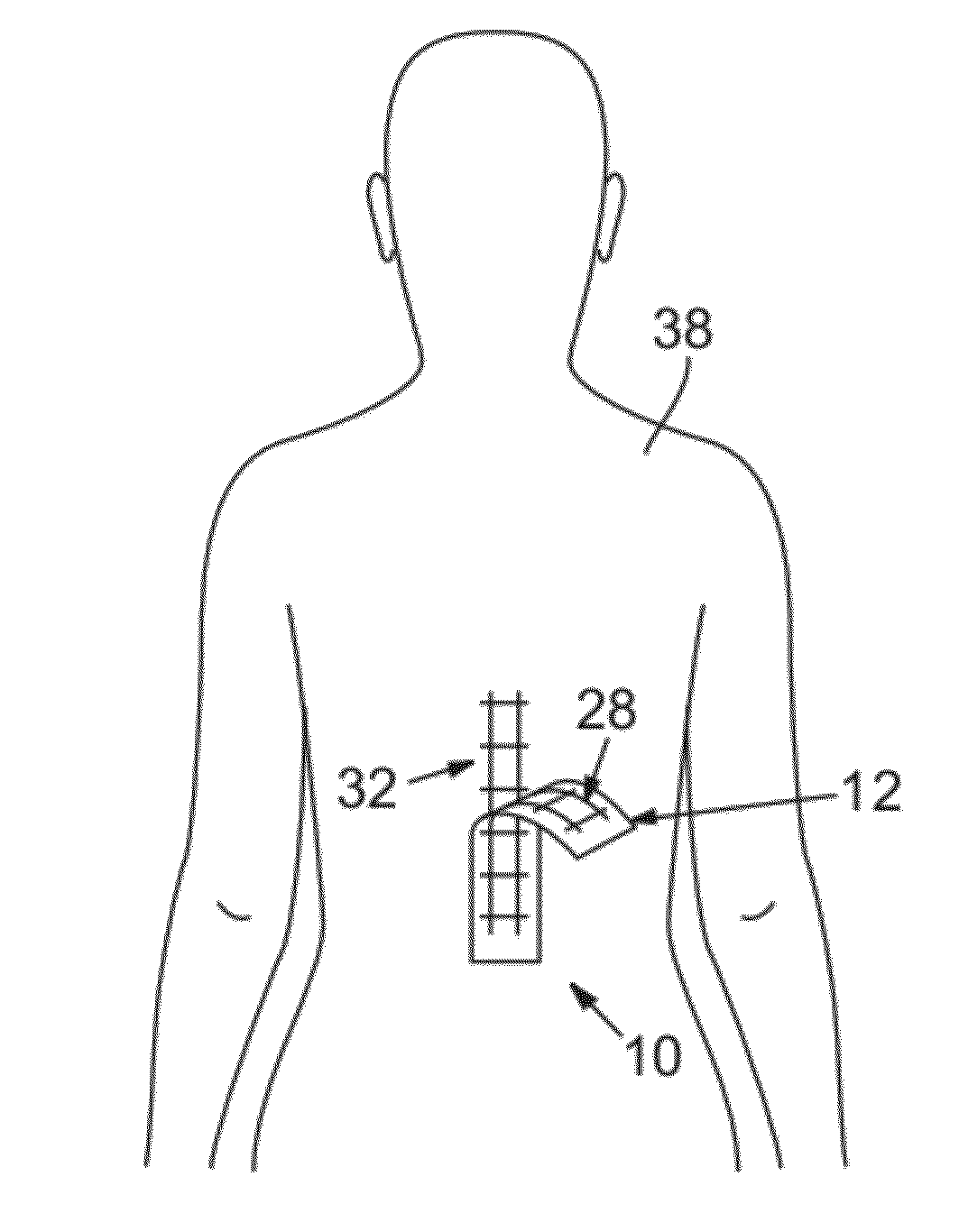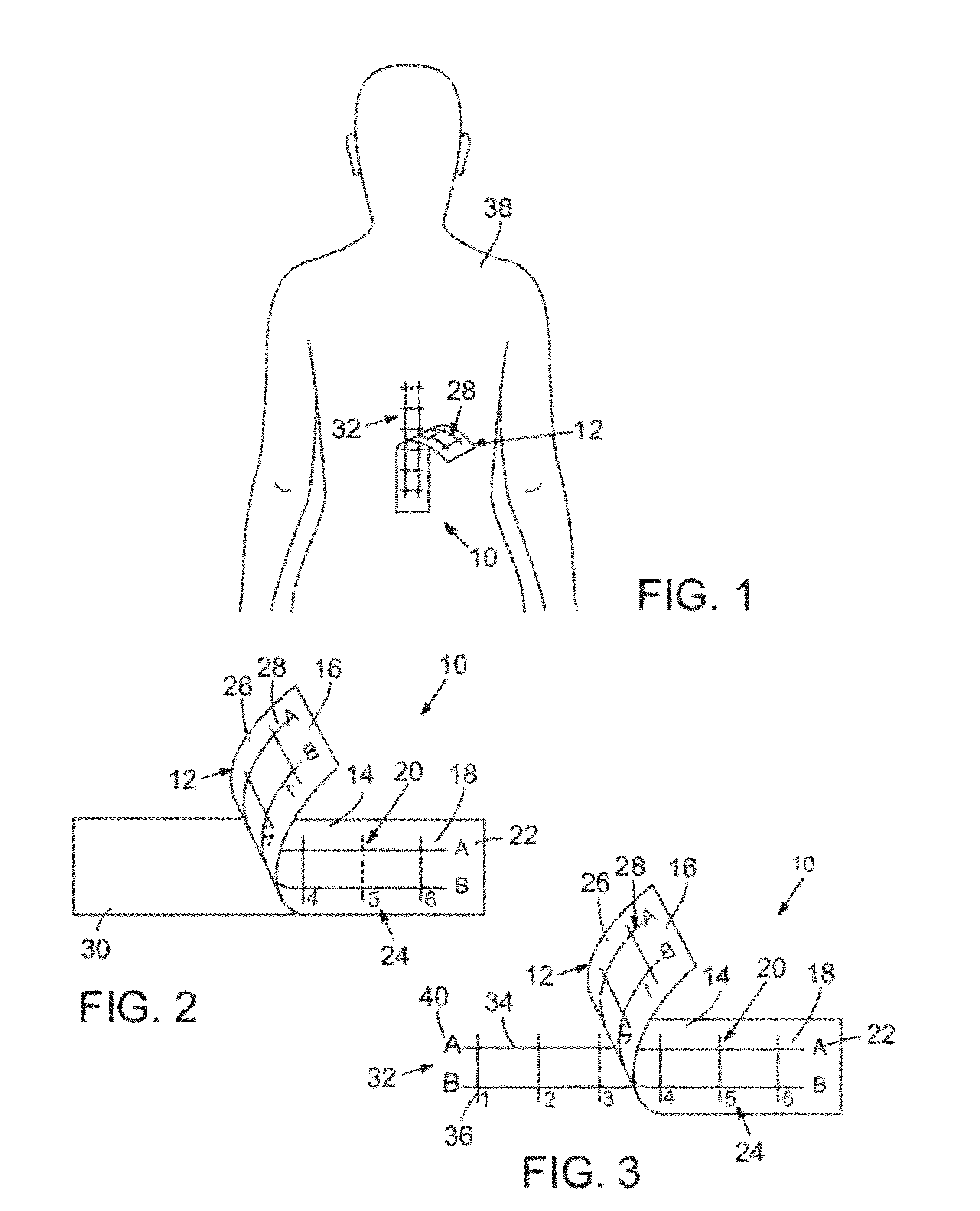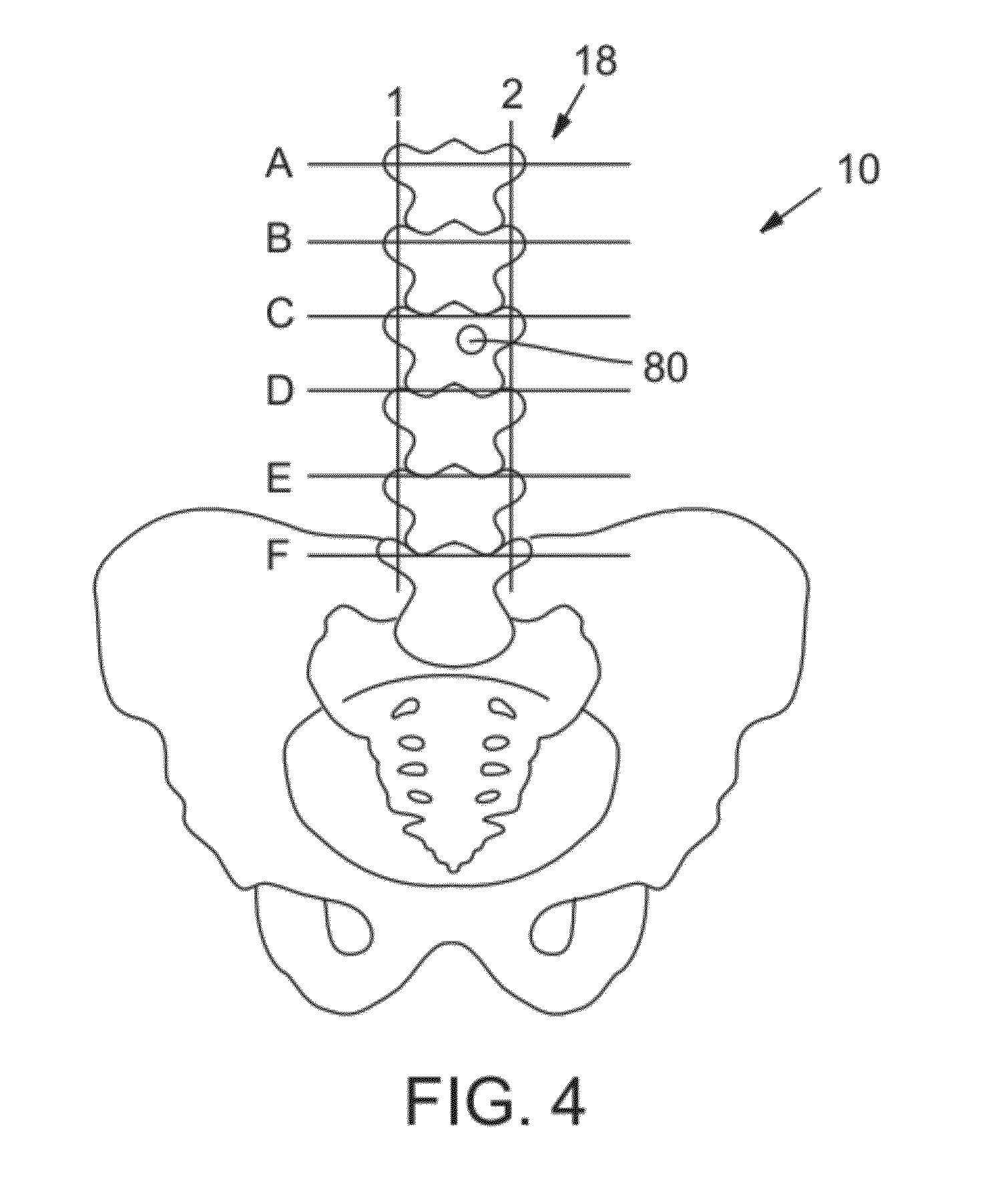Medical Procedure Localizing Aid
- Summary
- Abstract
- Description
- Claims
- Application Information
AI Technical Summary
Benefits of technology
Problems solved by technology
Method used
Image
Examples
Embodiment Construction
[0030]In a most preferred embodiment, the medical procedure localizing aid 10 according to the present invention is a sterile, flexible adhesive-backed sheet or substrate having opposed top and bottom surfaces. As a naming convention, for purposes herein the “top” or “upper” surface of the localization aid is the surface of the sheet that is exposed and faces away from the patient when the localization aid is in place. The “bottom” or “lower” surface is then the opposite side of the sheet—that is, the side of the sheet on which an adhesive material has typically been applied and which is applied to the patient's skin when the localization aid is in place. The actual geometric configuration of the sheet can range from a variety of different shapes and sizes. This can range from a large area to cover the chest and back to small narrow strips for fingers and toes, or any other convenient size or shape. The top surface will suspend indicia that is opaque to medical imaging scans—as note...
PUM
 Login to View More
Login to View More Abstract
Description
Claims
Application Information
 Login to View More
Login to View More - R&D
- Intellectual Property
- Life Sciences
- Materials
- Tech Scout
- Unparalleled Data Quality
- Higher Quality Content
- 60% Fewer Hallucinations
Browse by: Latest US Patents, China's latest patents, Technical Efficacy Thesaurus, Application Domain, Technology Topic, Popular Technical Reports.
© 2025 PatSnap. All rights reserved.Legal|Privacy policy|Modern Slavery Act Transparency Statement|Sitemap|About US| Contact US: help@patsnap.com



